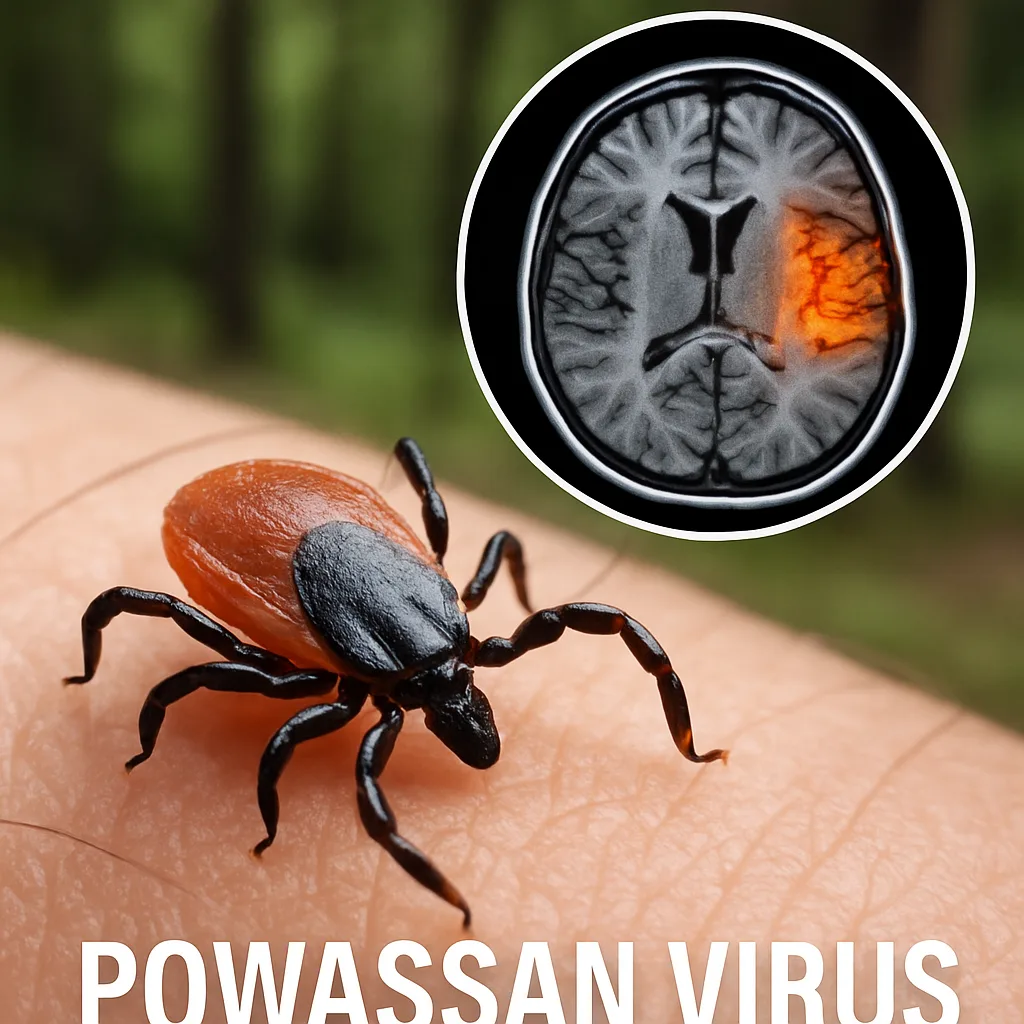Ticks are notorious for transmitting Lyme disease, but there’s another, lesser-known virus that is far more deadly — the Powassan virus. Though rare, this virus has been on the rise in North America, prompting increased concern among health professionals. This blog delves deep into what Powassan virus is, its symptoms, methods of transmission, and the latest available treatments.
What is Powassan Virus?

Powassan virus (POWV) is a rare but serious tick-borne flavivirus first identified in Powassan, Ontario, in 1958. Unlike Lyme disease, which takes up to 36–48 hours of tick attachment to transmit, Powassan virus can be transmitted in as little as 15 minutes.
This virus belongs to the same family as West Nile and Zika viruses and is primarily transmitted through the blacklegged tick (also known as the deer tick) and the groundhog tick. The virus can infect the central nervous system, leading to encephalitis (brain inflammation) and meningitis (inflammation of the membranes around the brain and spinal cord).
Geographic Spread and Seasonality
While cases are still relatively rare, they are increasing, particularly in the northeastern and Great Lakes regions of the United States, and parts of Canada. Most cases occur between late spring and mid-fall, aligning with peak tick activity.
Symptoms of Powassan Virus
Symptoms typically appear 1 to 4 weeks after a tick bite and vary in severity. Many infected individuals may remain asymptomatic, but in some cases, severe complications can arise.
Common Symptoms:
- Fever and chills
- Headache
- Vomiting
- Weakness
- Confusion
- Seizures
- Speech difficulties
- Loss of coordination
In severe cases, Powassan virus can lead to:
- Encephalitis (inflammation of the brain)
- Meningitis (inflammation of the membranes surrounding the brain and spinal cord)
- Coma or death (in about 10% of severe cases)
Around 50% of survivors may experience long-term neurological complications, such as memory issues, headaches, and muscle wasting.
How is Powassan Virus Diagnosed?
Diagnosis can be challenging due to its rarity and similarity to other viral infections. If Powassan is suspected, doctors will use:
- Blood tests or spinal fluid analysis to detect antibodies or viral RNA
- Neuroimaging such as MRI to identify brain inflammation
- Lumbar puncture (spinal tap) to evaluate cerebrospinal fluid for signs of infection
Early diagnosis is critical to managing symptoms and minimizing long-term damage.
Is There a Treatment for Powassan Virus?
Unfortunately, there is no specific antiviral treatment for Powassan virus. Management focuses on supportive care, especially for those with severe neurological involvement.
Supportive Treatment Includes:
- Hospitalization in severe cases
- IV fluids and nutrition
- Respiratory support (ventilators, if needed)
- Medications to reduce brain swelling
- Anti-seizure medications
- Pain management
While some patients recover fully, others may experience long-term complications, so early medical attention is vital.
Can You Prevent Powassan Virus?
Yes, prevention is key because treatment options are limited. Avoiding tick bites is the most effective way to prevent Powassan virus infection.
Tick Bite Prevention Tips:
- Use insect repellent with DEET or permethrin-treated clothing.
- Wear long sleeves, pants, and closed shoes when walking in wooded or grassy areas.
- Avoid bushy and wooded areas with high grass and leaf litter.
- Perform thorough tick checks after spending time outdoors.
- Shower within two hours of being outdoors.
- Treat pets with veterinarian-approved tick prevention.
Powassan Virus vs. Lyme Disease
While both are tick-borne illnesses, they differ significantly:
| Feature | Powassan Virus | Lyme Disease |
| Incubation | 1-4 weeks | 3-30 days |
| Transmission Time | 15 minutes | 36-48 hours |
| Causative Agent | Virus | Bacteria (Borrelia) |
| Treatment | Supportive only | Antibiotics |
| Long-Term Effects | Neurological | Joint and neurological |
Emerging Research and Vaccines
Ongoing research is focused on:
- Developing vaccines using flavivirus platforms
- Monoclonal antibody treatments to reduce viral load
- Improved tick control strategies
As the climate warms and tick habitats expand, scientists warn that Powassan and other tick-borne diseases will become more common, making these research efforts even more critical.
Final Thoughts
The Powassan virus may not be as well-known as Lyme disease, but it poses a serious health threat. With no vaccine or specific treatment available, prevention remains your best defense. Awareness, protective measures, and early medical intervention can make a significant difference in outcomes.

